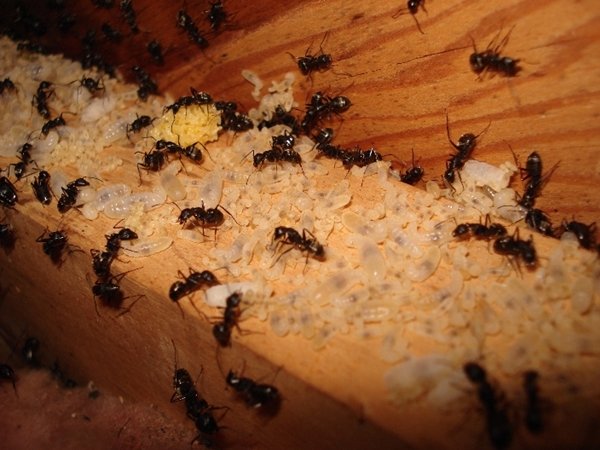When ants make their way into your home, it might seem like a minor inconvenience at first maybe a few trails near the kitchen bench or a few stragglers in the bathroom. But beneath that surface-level nuisance lies a deeper issue that can silently grow into a serious infestation. Understanding the full scope of how ants infiltrate, colonise, and thrive within homes is essential to tackling the problem for good.
For homeowners looking to stay one step ahead, uncovering how these tiny invaders think, move, and organise can make a world of difference. If you’re facing persistent ant issues, getting professional help for ants control in Melbourne is often the most reliable way forward.
1. The Entry Points You Didn’t Know Existed
Ants are masters of infiltration. Most infestations begin with just a few scout ants that discover an entry point and report back to the colony. These entryways are often so small that they’re hard to detect with the naked eye.
Gaps around windows, cracks in the walls, ventilation ducts, and even the smallest separation in flooring or tiling can serve as an invitation to ants. Once they’ve established a path, they leave behind a chemical trail called pheromones to guide others.
This system ensures that once ants find food or shelter in your home, their numbers multiply rapidly. And while DIY sealing can help, it often overlooks microscopic cracks or under-structure breaches that ants exploit.
2. Why Ants Love Moisture and Warmth
Certain rooms in your home are more prone to ant activity simply because of environmental conditions. Bathrooms, kitchens, and laundry areas are all hotspots due to a combination of warmth and moisture.
Ants, like many pests, are attracted to humid environments. Moisture can soften building materials, making it easier for ants to dig in and build nests. Water leaks, clogged drains, and poor ventilation can unknowingly offer the perfect breeding grounds.
Warmth is another driver especially during cooler months. Your home offers a comfortable refuge from the outside elements, encouraging colonies to move deeper into your walls and floors for warmth and security.
3. The Hidden Architecture of Indoor Colonies
Most people imagine ants nesting only in gardens or near tree roots, but many species are just as comfortable making their homes inside walls, roof voids, and under floorboards.
Ants are incredibly organised. Once inside, they build complex nests with designated roles for worker ants, soldiers, and the queen. These nests can expand quickly and often go unnoticed until surface-level signs become obvious like repeated sightings in the same area, damage to wood, or rustling noises in walls.
Colonies don’t need much space to thrive. Even a small void in insulation or a bit of warmth behind kitchen cabinets can serve as prime nesting real estate.
4. Food Trails and Communication Systems
One of the most fascinating aspects of ant behaviour is their communication. Once a scout ant finds a food source, it leaves behind a trail of pheromones that others follow. These invisible trails become superhighways, guiding hundreds or thousands of ants straight to your food.
Pantry goods, sugar spills, pet food bowls, and even bins can become the centre of a feeding frenzy. Unless the entire colony is treated, these trails will re-establish themselves even after temporary cleaning or baiting.
Because these pathways are based on scent, even a well-cleaned surface can retain enough trace chemicals to re-attract ants days later.
5. The Cost of Delay: Why Ant Infestations Escalate
Ignoring the early signs of ant activity often leads to larger problems. The longer a colony is allowed to grow, the more difficult and costly it becomes to eliminate. In some cases, multiple nests may form in different parts of the home, each connected by a complex network of trails.
Not only do ants contaminate food, but they can also compromise structural integrity. Some species burrow into wood or electrical insulation, increasing the risk of wiring faults or moisture retention.
When infestations reach this level, eliminating them may require several rounds of treatment, which can increase the overall ant removal cost in Melbourne.
6. Prevention Through Awareness and Professional Support
The best way to avoid a serious infestation is through early intervention and smart prevention. Regularly inspecting your home’s perimeter, sealing entry points, managing moisture, and storing food in sealed containers can all reduce your risk.
However, once ants have taken hold, professional help is usually necessary to address the root of the problem not just the visible symptoms. Technicians understand ant biology, behaviours, and treatment techniques that are safe for homes with children or pets.
Partnering with experts ensures the infestation is completely removed and not just temporarily disrupted.
Don’t let ants quietly take over your home. By recognising the signs early and understanding the hidden ways ants operate, you can take proactive steps to protect your property and loved ones. Whether you live in Richmond, Epping, Narre Warren, Broadmeadows, Ringwood, Berwick or South Morang, timely action makes all the difference.
For comprehensive and reliable ant solutions, reach out to Ants Pest Control Melbourne today on 03 8592 4707. With expert insights and proven methods, you’ll regain control of your home beyond just the surface.




